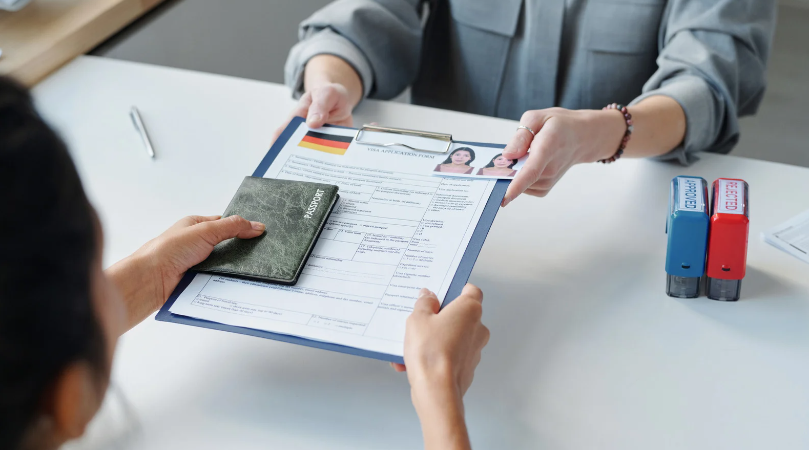Unused immigrant visas and the determination of visa caps are critical aspects of U.S. immigration law. They impact thousands of immigrants waiting to move to the U.S. but face delays due to legislative frameworks. Section 1156 of Title 8, U.S. Code, and other documentary requirements form the backbone of this visa system. Understanding how these factors interplay can make a significant difference in navigating the complexities of U.S. immigration.
Key Takeaways:
- Unused immigrant visas are reallocated through legal frameworks.
- Visa caps are determined annually, influenced by quotas and policy considerations.
- Section 1156 of Title 8 governs how unused immigrant visas are handled.
- Documentary requirements for immigration are stringent and vary by visa type.
- Legal support is crucial to properly navigating the immigration process.
What Are Unused Immigrant Visas?
Unused immigrant visas are visa slots that remain unfilled within a given fiscal year due to various reasons, such as applicants not using their allocated visa, disqualification, or administrative delays. When a country or visa category does not meet its cap, these unused visas are subject to reallocation under U.S. immigration law. These unused visas are critical for managing backlogs and ensuring that available visa slots are utilized efficiently. They help immigrants from countries with long wait times gain access to visas faster.
Unused immigrant visas arise when allocated visas are not used within the fiscal year. They are then redistributed to address visa backlogs and ensure efficient use of visa allocations.
What Happens to Unused Immigrant Visas?
Unused immigrant visas are typically reallocated or repurposed based on statutory frameworks such as Section 1156 of Title 8. If a visa issued to a quota immigrant is not utilized within its validity period, or if the immigrant fails to enter the U.S., the visa becomes available for other qualified applicants. This system helps reduce visa waste and ensures that visa slots are maximized across different categories.
Unused immigrant visas don’t go to waste. Instead, they are reallocated to maintain the efficiency of the immigration process and address backlogs.
How Are Visa Caps Determined?
Visa caps are limits set on the number of immigrants allowed entry from specific countries or for certain visa categories. These caps are determined by Congress based on quotas established in the Immigration and Nationality Act (INA) and other laws. Factors influencing visa caps include labor market needs, family reunification goals, and international relations. Each year, the U.S. sets quotas for family-sponsored, employment-based, and diversity visas.
Visa caps help regulate immigration flow and are determined based on economic, family, and humanitarian considerations.
Understanding Section 1156 of Title 8
Section 1156 of Title 8 governs the reallocation of unused immigrant visas. When a visa issued to an immigrant is not utilized, the visa can be reassigned. This section was introduced to ensure that any unused visas do not go to waste, but rather can be distributed to others waiting for immigration approval. By redistributing unused visas, the law helps alleviate visa backlogs, especially for countries with longer waiting lists.
Section 1156 addresses visa reallocation to prevent waste and streamline the U.S. immigration process by redistributing unused immigrant visas.
Documentary Requirements for Immigration
Section 211 of U.S. immigration law outlines documentary requirements for immigrants entering the United States. Key documents include a valid passport, visa, and proof of admissibility, such as vaccination records, background checks, and financial support documentation. These requirements ensure that immigrants meet health, safety, and legal criteria before they can be admitted. Special provisions exist for children born to quota immigrants, non-quota immigrants, and those temporarily admitted under certain visa programs.
Immigrants must meet stringent documentation requirements to qualify for entry into the U.S., including visas and health clearances.
Dos and Don’ts for Immigration Applicants
Here are some essential Dos and Don’ts for applicants:
Dos
- Submit Complete Documentation: Ensure that all required forms and supporting documents are fully completed and submitted on time.
- Follow Instructions Carefully: Each visa category has specific requirements—read guidelines thoroughly to avoid delays or denials.
- Consult an Attorney: Seeking legal advice can prevent mistakes and ensure you meet all legal criteria.
- Keep Track of Deadlines: Immigration processes often have strict deadlines; stay organized to avoid missing important dates.
Don’ts
- Submit Inaccurate Information: Providing false or incomplete information can result in visa denial or future complications.
- Overlook Visa Expiration Dates: Failing to renew visas or apply for extensions in time can lead to legal issues or deportation.
- Attempt Entry with Incomplete Documents: Always ensure your visa and travel documents are valid and in order before traveling.
- Assume All Rules Are the Same for Every Visa: Different visa types have varying criteria—what works for one might not work for another.
Following the correct procedures, consulting legal experts, and avoiding common pitfalls can significantly impact the success of your immigration application.
The Role of Legal Aid in Immigration
Navigating the complexities of U.S. immigration law is not easy, particularly when dealing with unused visas, visa caps, and documentary requirements. This is where the expertise of immigration attorneys comes in. Legal aid is crucial for applicants to ensure that their paperwork is in order, their rights are protected, and they are fully informed about their options. Attorneys also help applicants avoid costly mistakes that could delay their process or result in deportation.
Immigration attorneys play a critical role in helping immigrants navigate complex legal systems, ensuring they meet all requirements and are informed of their rights.
Conclusion
Unused immigrant visas and visa caps are integral components of U.S. immigration law. Section 1156 of Title 8 addresses the reallocation of unused visas, ensuring that they are redistributed effectively. Legal representation is essential in navigating the myriad laws governing these areas. Understanding the importance of visa caps, reallocation processes, and required documentation will help applicants better prepare for their journey to the U.S.
FAQs
- What happens to unused immigrant visas?
Unused immigrant visas are redistributed to other eligible applicants under Section 1156 of Title 8. - How are visa caps determined?
Visa caps are set annually by Congress, based on quotas for family, employment, and diversity visas. - What is Section 1156 of Title 8?
It governs the reallocation of unused immigrant visas, ensuring that no visa slots go to waste. - What are the documentary requirements for immigration?
Immigrants must provide valid visas, passports, health clearances, and proof of admissibility as outlined by immigration laws. - How can an attorney help with the immigration process?
Attorneys assist with visa applications, ensure compliance with legal requirements, and protect immigrants’ rights. - Why are visa caps important?
Visa caps regulate the flow of immigrants and are designed to balance economic, familial, and humanitarian interests.
ATTORNEY ADVERTISING
Contact Us
For more information or to schedule a consultation, visit our website at Wasden Law, Our experienced litigation attorneys are ready to fight for your rights and ensure your immigration journey is as smooth as possible.
🔍 Have questions or need advice? Drop a comment below! Our team is here to help. 🗣️💬
✉️ Connect with us for personalized guidance and support. Let’s navigate your immigration journey together. 🌐📩
💡 Curious about your specific case? Ask us in the comments and get expert advice tailored to your needs. 🧑⚖️📝
Disclaimer:
The information provided in this article is for general informational purposes only and does not constitute legal advice. While we strive to ensure the content is accurate and up-to-date, it is not a substitute for professional legal consultation. Immigration laws and regulations are subject to change, and their application can vary based on specific circumstances. We recommend scheduling a consultation with us to obtain advice tailored to your individual situation. The authors and publishers of this article are not responsible for any actions taken based on the information provided herein.
How useful was this post?
Click on a star to rate it!









